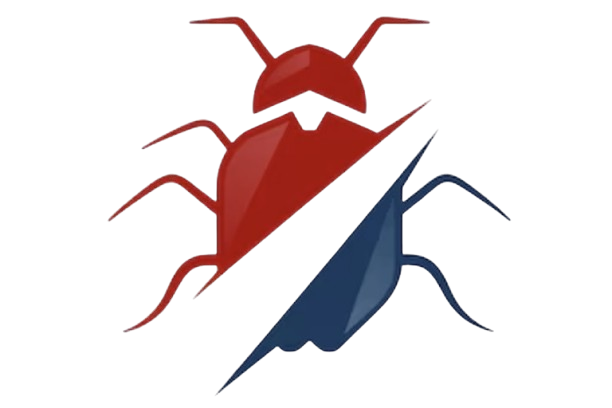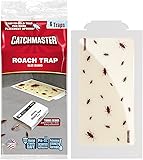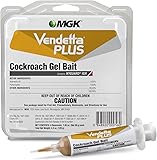Pest Lockdown
How to Get Rid of Turkestan Cockroaches: The Ultimate Guide
Turkestan cockroaches (Blatta lateralis), also known as “red runner” cockroaches, are an increasingly common pest in many parts of the world. Recognizable by their reddish-brown color and fast movements, these cockroaches can quickly become a nuisance in homes and gardens. So, if you’ve been wondering how to get rid of Turkestan cockroaches, you’re in the right place.
This comprehensive guide will provide you with all the information you need to effectively remove Turkestan cockroaches from your home and prevent future infestations. We’ll cover identification, behavior, prevention, and various methods of control, including both DIY and professional solutions to get rid of Turkestan cockroaches.
Understanding Turkestan Cockroaches
Before we dive into how to get rid of these creepy crawlies, let’s cover the basics of Turkestan cockroaches.
Identification
Turkestan cockroaches are medium-sized insects, with adults typically measuring about 1 to 1.25 inches in length. Males and females exhibit distinct differences in appearance:
- Males: Slender and reddish-brown with long wings that cover their entire abdomen. They are capable of short flights.
- Females: Broader and darker in color, with shorter wings that do not fully cover their abdomen.
Both males and females have a distinctive yellowish border around the edges of their wings and pronotum (the shield-like structure behind the head).
Behavior and Habitat
Turkestan cockroaches are primarily outdoor pests but can invade homes in search of food, water, and shelter. They are nocturnal, meaning they are most active at night. These cockroaches prefer warm, dry environments and are often found in:
- Gardens and yards, particularly in leaf litter, mulch, and under rocks.
- Outdoor structures like sheds, garages, and compost bins.
- Inside homes, they can be found in basements, crawl spaces, and around plumbing fixtures.
Turkestan cockroaches are scavengers, feeding on a wide variety of organic matter, including decaying plants, garbage, and even pet food.
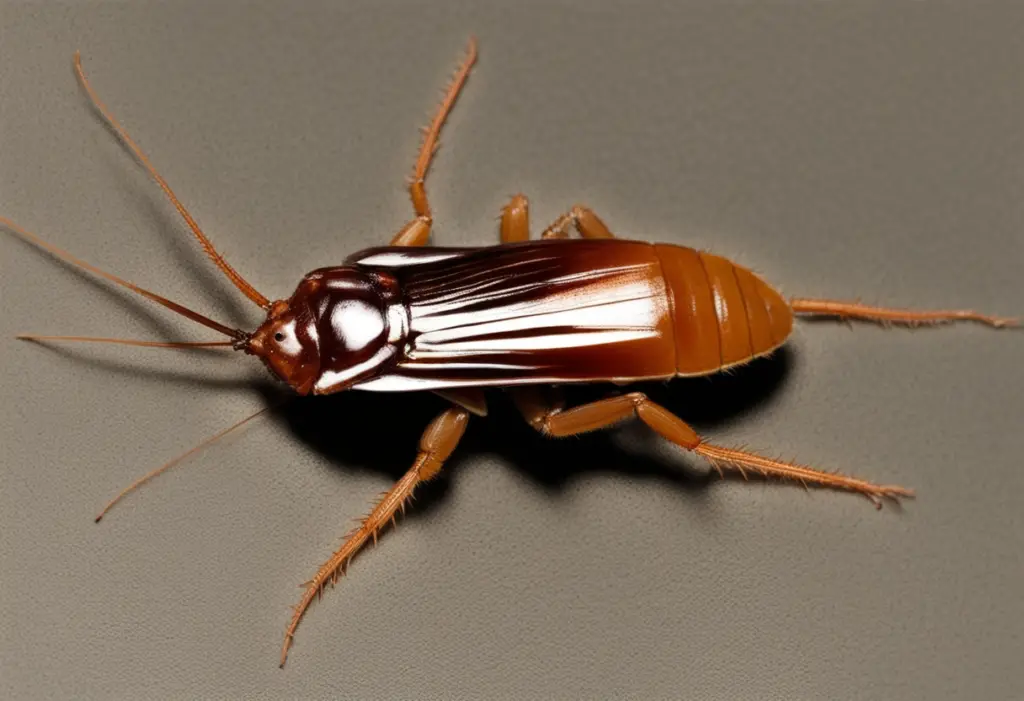
Prevention
Preventing an infestation is always easier than dealing with an existing one. Here are some effective prevention strategies to keep Turkestan cockroaches out of your home:
Maintain Cleanliness
Keeping your home clean and free of food debris is crucial in preventing cockroaches. Regularly sweep, mop, and vacuum floors to remove crumbs and spills. Clean kitchen counters, stovetops, and other food preparation areas daily. Store food in airtight containers and promptly dispose of garbage in sealed bins.
Eliminate Moisture
Cockroaches need water to survive, which is why they are attracted to homes with moisture. Fix any leaky faucets, pipes, or appliances. Use dehumidifiers in damp areas like basements and ensure proper ventilation in bathrooms and kitchens.
Seal Entry Points
Inspect your home for potential entry points and seal them to prevent cockroaches from gaining access. Pay close attention to cracks and crevices around doors, windows, and utility pipes. Install door sweeps and repair damaged screens on windows and vents.
Outdoor Maintenance
Since Turkestan cockroaches are often found outdoors, maintaining your yard can help reduce the risk of infestation. Keep your lawn and garden well-maintained by regularly removing leaf litter, mulch, and other organic debris. Store firewood and compost bins away from the house and elevate them off the ground if possible.
Detection
Early detection of Turkestan cockroaches can help you address the problem before it becomes a full-blown infestation. Here are some signs to look out for:
Visual Sightings
The most obvious sign of an infestation is seeing the cockroaches themselves. Since they are nocturnal, you are more likely to spot them at night or when you turn on a light in a dark room.
Droppings
Cockroach droppings are small, dark, and cylindrical, resembling coffee grounds or black pepper. You may find them in areas where cockroaches are active, such as kitchen cabinets, drawers, and around appliances.
Egg Cases
Turkestan cockroaches produce egg cases called oothecae, which are light brown and measure about 1/4 inch in length. These can be found in hidden areas, such as behind furniture, under appliances, or in cracks and crevices.
Unpleasant Odors
A large infestation can produce a musty, unpleasant odor caused by the cockroaches’ secretions. This odor can be particularly noticeable in enclosed spaces like cabinets and pantries.
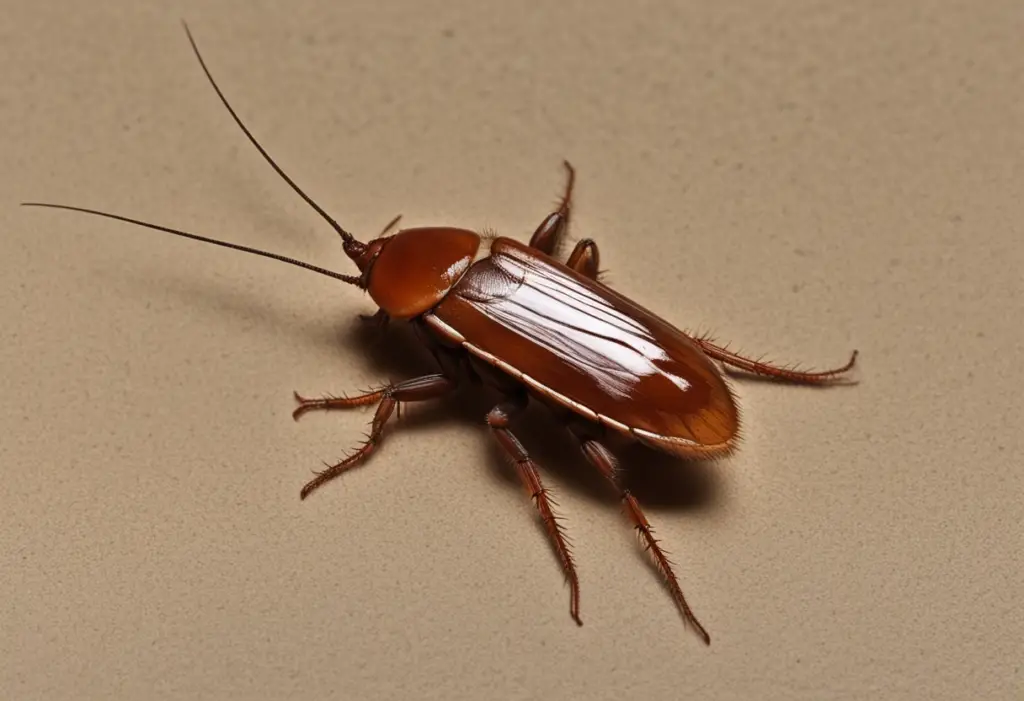
Control Methods to Get Rid of Turkestan Cockroaches
If you suspect or have confirmed an infestation, it’s essential to take immediate action to control and eliminate Turkestan cockroaches. Here are various methods you can use, ranging from DIY solutions to professional treatments.
DIY Solutions
Bait Stations
Cockroach bait stations are an effective way to control an infestation. These stations contain a slow-acting insecticide mixed with an attractive food source. Cockroaches consume the bait and carry it back to their nest, where it spreads to other members of the colony.
How to Use:
- Place bait stations in areas where cockroaches are commonly seen, such as under sinks, behind appliances, and along baseboards.
- Replace bait stations regularly, following the manufacturer’s instructions.
Gel Baits
Gel baits are another effective DIY solution for controlling cockroaches. The gel is applied in small dabs in areas where cockroaches are active, and it works similarly to bait stations by attracting and poisoning the insects.
How to Use:
- Apply gel bait in cracks, crevices, and other hiding spots where cockroaches are likely to travel.
- Reapply the gel as needed, based on the level of infestation and manufacturer recommendations.
Insecticidal Dusts
Insecticidal dusts, such as diatomaceous earth and boric acid, can be used to kill cockroaches by damaging their exoskeletons and causing dehydration.
How to Use:
- Lightly dust areas where cockroaches are likely to crawl, including behind appliances, inside wall voids, and along baseboards.
- Use a thin layer of dust, as cockroaches are less likely to avoid it if they don’t notice it.
Traps
Sticky traps can help monitor and reduce cockroach populations. These traps capture cockroaches as they travel across them, allowing you to identify the extent of the infestation and target treatment areas.
How to Use:
- Place sticky traps in areas where cockroach activity is observed, such as near entry points, under sinks, and behind appliances.
- Check traps regularly and replace them as needed.
Our Top 4 Product Picks for Getting Rid of Turkestan Cockroaches
When dealing with a Turkestan cockroach infestation, it’s essential to have the right tools at your disposal. Here are our top product picks for effectively eliminating these pests:
#1: Raid Concentrated Deep Reach Fogger
Raid Concentrated Deep Reach Fogger is a powerful fogging insecticide that penetrates deep into cracks, crevices, and other hiding spots where Turkestan cockroaches may be hiding. This fogger releases a fine mist that kills cockroaches on contact and provides long-lasting residual protection. It is easy to use and effectively treats large areas, making it ideal for controlling widespread infestations.
Sale
Raid Concentrated Deep Reach Fogger, 1.5 OZ (2)
- Kills ants, roaches & spiders
- Penetrates into cracks & crevices to kill bugs where they live & breed
- Keeps killing for up 2 months
- Non-staining. No wet, messy residue.
- Deep Reach fogger
#2: Catchmaster Roach Trap Glue Boards
Catchmaster Roach Trap Glue Boards are non-toxic adhesive traps that effectively capture Turkestan cockroaches and other crawling pests. These glue boards can be placed in areas where cockroach activity is observed, such as along baseboards, behind appliances, and in cabinets. Once the cockroaches come into contact with the trap, they become stuck, preventing them from escaping and reproducing.
- READY TO USE: Cockroach and Insect glue traps are pre-scented and are intended for use without additional roach bait. The cockroach trap can be folded into a tunnel if used in areas with debris or dust. The tight space of the tunnel also mimics small areas roaches may use for harborage. The indoor insect trap is scented with a special formula to attract insects. Our products are tested under the harshest field conditions to ensure maximum reliability for any level of pest control expert.
- YEAR-ROUND PROTECTION: Catchmaster glue traps are safe, non-toxic and mess-free. This roach killer is an effective alternative to standalone glue boards that may not hold up as well in damp or humid areas like basements or bathrooms. When placed in an area with normal conditions, roach traps indoor can last up to one full year.
- HOME & FAMILY SAFE: Designed to help you keep your family protected and safe from unwanted pests in your home, Catchmaster’s cockroach killer is intuitive, secure and effective. The sticky traps are easy to place; simply put the bug catcher indoor against walls & along pathways to catch unwanted bugs and insects.
- TOTAL COVERAGE: The insect killer can be used indoors in residential, commercial, or industrial buildings, and sensitive areas where rodenticides or snap traps are undesirable or prohibited. Our glue boards are proudly made in the USA, fast acting and non-toxic, keeping your family and home safe from pests!
- INTELLIGENT PEST MANAGEMENT: At our core, we are dedicated pest detectives. We believe in utilizing a science-based approach to integrated pest control. We call this approach Intelligent Pest Management. We leave no stones unturned when it comes to pests and we have unwavering conviction in our products.
#3: HOY HOY Trap A Roach Bait Glue Traps
HOY HOY Trap A Roach Bait Glue Traps are baited adhesive traps designed specifically for cockroach control. These traps contain a powerful attractant that lures Turkestan cockroaches and other pests to the trap, where they become stuck on the adhesive surface. The traps are easy to use and can be placed discreetly in areas where cockroach activity is suspected, providing continuous monitoring and control.
- VERSATILE! Easy to use, water resistant, adjustable structure allows for maximum versatility in all kinds of spaces like under sinks, behind toilets, and behind appliances.
- CLEAN! Safe and odor free. Great for homes with children and pets, and sensitive (or squeamish) adults.
- POWER! The secret to our amazing trapping power, the HOY HOY Trinity, combines a welcome mat, irresistible bait, and the stickiest wavy glue.
- TIDY! Design features include a pick up knob, for easier, less anxious disposal. Reduces the “ick” factor.
- WE’RE #1! Japan’s best selling roach trap, backed by 100+ years experience in pest control, with 2500 million units sold in 100+ countries, now is available to you!
#4: MGK Vendetta Plus Cockroach Gel
MGK Vendetta Plus Cockroach Gel is a highly effective cockroach bait gel that targets Turkestan cockroaches and other cockroach species. This gel bait contains a potent insecticide combined with a food attractant that entices cockroaches to consume the bait. Once ingested, the insecticide quickly kills the cockroaches and provides secondary kill through contact with other cockroaches in the nest. The gel is easy to apply and can be used in cracks, crevices, and other hard-to-reach areas where cockroaches hide.
Sale
MGK Vendetta Plus Cockroach Gel (4 Tubes) Bait & IGR Killer Paste Not for Sale to: California, 4 Oz
- Vendetta Plus Cockroach Gel Bait (4tubes) Roach Bait & Igr Roach Killer Paste Not For Sale To: California.Does not contain peanuts, shellfish, dairy, tree nuts, fish or wheat
By incorporating these top product picks into your cockroach control strategy, you can effectively eliminate Turkestan cockroaches from your home and prevent future infestations. Remember to always read and follow the product label instructions carefully for safe and effective use.
Natural Remedies to Get Rid of Turkestan Cockroaches
Essential Oils
Certain essential oils, such as peppermint, eucalyptus, and tea tree oil, are known to repel cockroaches. You can create a natural repellent spray by mixing these oils with water.
How to Use:
- Mix 10-15 drops of essential oil with water in a spray bottle.
- Spray the mixture in areas where cockroaches are likely to enter or hide, such as around windows, doors, and baseboards.
Baking Soda and Sugar
A mixture of baking soda and sugar can be used as a homemade cockroach bait. The sugar attracts the cockroaches, while the baking soda disrupts their digestive system, ultimately killing them.
How to Use:
- Mix equal parts baking soda and sugar in a shallow dish.
- Place the dish in areas where cockroaches are active, such as under sinks and near food sources.
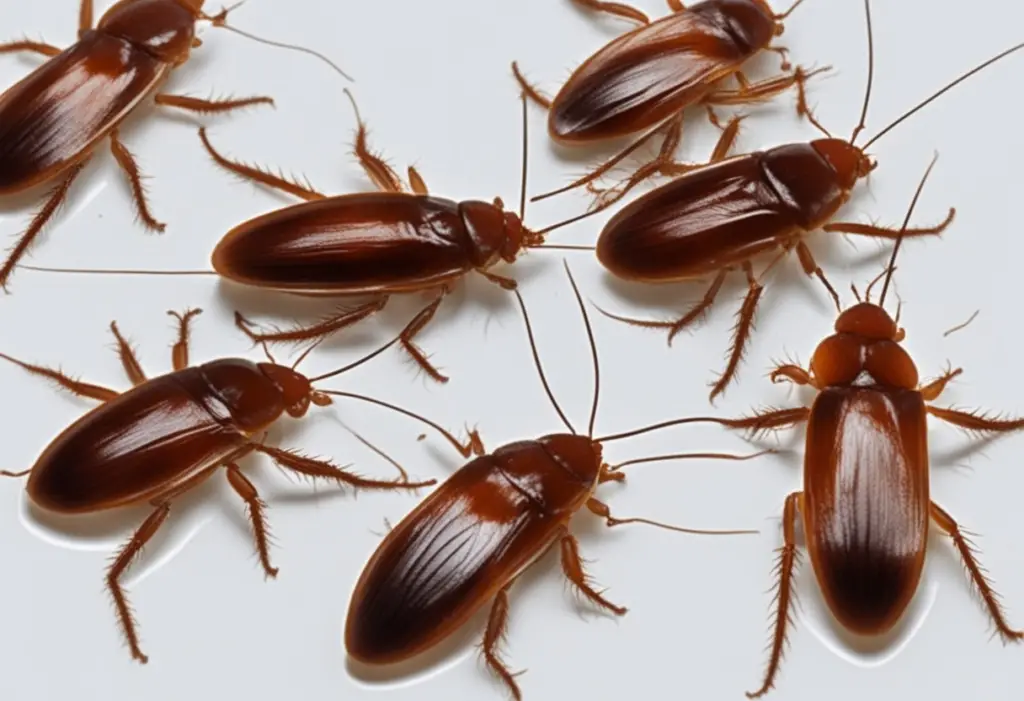
Professional Solutions for Turkestan Cockroach Infestations
If DIY methods are not effective in controlling the infestation, it may be necessary to seek professional pest control services. Professional exterminators have access to more potent insecticides and specialized equipment to effectively eliminate cockroach populations.
Chemical Treatments
Professional pest control companies often use a combination of liquid insecticides, baits, and dusts to treat cockroach infestations. These treatments are typically more effective than over-the-counter products and can provide long-lasting results.
How to Use:
- Schedule an inspection with a reputable pest control company to assess the extent of the infestation.
- Follow the exterminator’s recommendations for treatment and follow-up visits to ensure the infestation is fully eliminated.
Integrated Pest Management (IPM)
Integrated Pest Management (IPM) is a comprehensive approach to pest control that combines multiple strategies to manage and prevent infestations. IPM focuses on long-term prevention and minimizes the use of chemical treatments while getting rid of Turkestan cockroaches.
How to Use:
- Work with a pest control professional to develop an IPM plan tailored to your home and specific infestation.
- Implement a combination of preventive measures, monitoring, and targeted treatments to manage the cockroach population.
Long-Term Prevention
After successfully eliminating Turkestan cockroaches from your home, it’s essential to take steps to prevent future infestations. Here are some long-term prevention strategies to keep your home cockroach-free:
Regular Cleaning
Maintain a regular cleaning schedule to keep your home free of food debris and potential hiding spots for cockroaches. Pay special attention to kitchen areas, where food and moisture are most likely to attract pests.
Routine Inspections
Perform routine inspections of your home, especially in areas where cockroaches are likely to enter or hide. Early detection can help prevent minor issues from becoming major infestations.
Pest-Proofing
Continue to seal potential entry points and repair any damage to screens, doors, and windows. Regularly inspect and maintain your home’s exterior to prevent cockroaches from gaining access.
Professional Maintenance
Consider scheduling regular pest control maintenance with a professional service. Routine treatments can help keep your home protected from future infestations and provide peace of mind.
Education and Awareness
Stay informed about cockroach behavior and prevention methods. Educating yourself and your household members about the importance of cleanliness, proper food storage, and early detection can help maintain a pest-free environment.
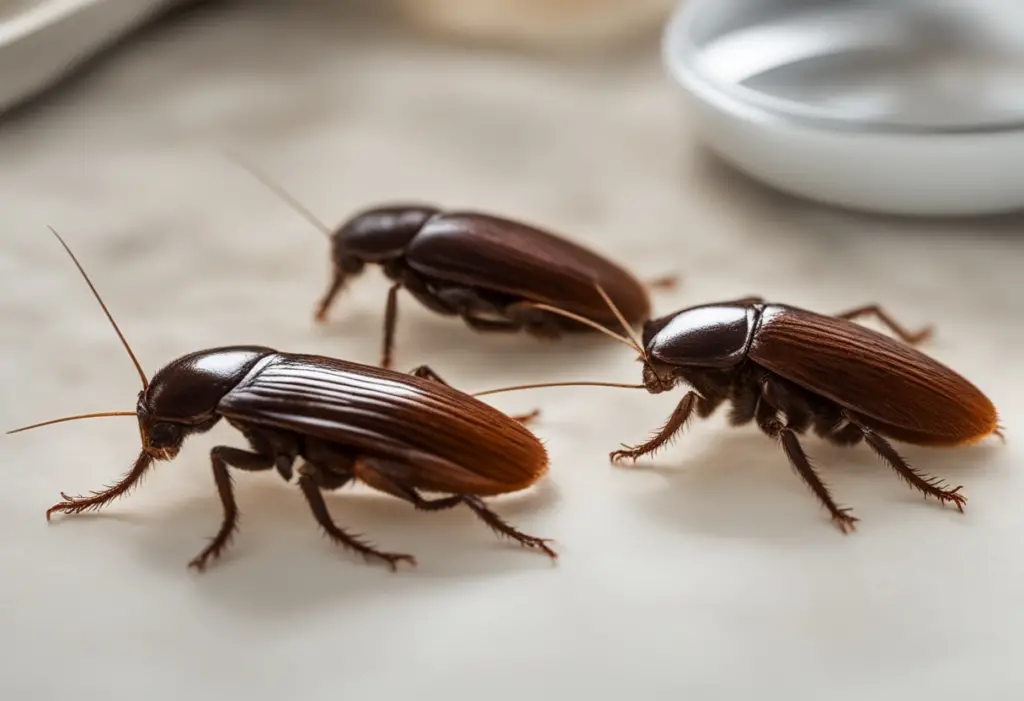
Final Thoughts on Getting Rid of Turkestan Cockroaches
Getting rid of Turkestan cockroaches requires a comprehensive approach that includes prevention, early detection, and effective control methods. By understanding their behavior, maintaining cleanliness, sealing entry points, and using a combination of DIY and professional solutions, you can successfully eliminate these pests from your home. Long-term prevention strategies are essential to ensure that your home remains cockroach-free in the future.
With the right knowledge and tools, you can take control of the situation and protect your home from the nuisance and potential health risks associated with Turkestan cockroaches. By following the guidelines outlined in this ultimate guide, you’ll be well-equipped to get rid of Turkestan cockroaches next time you are facing an infestation, and maintain a clean, healthy living environment.
Frequently Asked Questions
What are some other names for Turkestan cockroaches?
Turkestan cockroaches are also commonly known as “red runner cockroaches” or “red cockroaches” due to their distinctive reddish-brown coloration and rapid movements. They may also be referred to as simply “Turkestan roaches” or by their scientific name, Blatta lateralis. Another common name for this species is the “Turkish cockroach”.
Where are Turkestan cockroaches most common?
Turkestan cockroaches are native to the Middle East and Central Asia, particularly regions like Turkestan, Afghanistan, and Iran. However, they have become increasingly common in other parts of the world, including the United States, where they are often found in warmer, drier climates.
Are Turkestan cockroaches dangerous?
While Turkestan cockroaches are not considered as significant a health risk as some other cockroach species, they can still pose a threat to human health. Like other cockroaches, they can carry and transmit disease-causing pathogens, contaminate food, and trigger allergies and asthma in sensitive individuals. Additionally, their presence in large numbers can be a sign of unsanitary conditions in the home.
